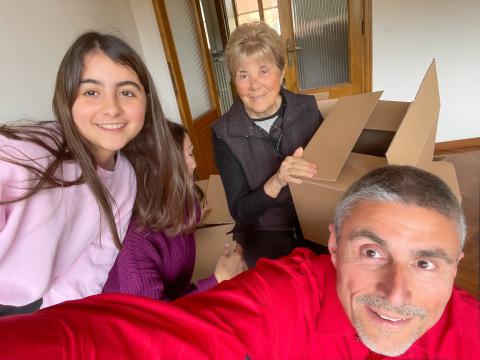Living with Older Loved Ones
While a full nest has many positives, it can also bring additional stress and unexpected issues. It’s important to consider the real world impacts beforehand. Here are four questions to think about.
1. Is everyone on-board with the change? Before any big moves (literal or metaphorical), all potential household members need to agree with the decision, including the senior! Other family should also support the idea.
Creating a roadmap, establishing expectations, anticipating adjustments can help ensure a smooth and happy living arrangement. Everyone needs to understand that roles may also shift with the new living arrangements. Children may need to take on additional chores. Seniors may need make financial contributions. Parents sandwiched in between may rearrange routines to find balance. Ideally, everyone plays well together.
2. What kind of senior care is needed? If an elder loved one moves into your house that means they should no longer live alone. There is a wide range of care that follows “not living alone,” from a little assistance to 24/7 attention. Knowing a senior’s medical condition and speaking with their doctor will clarify what is essential now for good care—and what care may be important in the long term.
As you think through the care you will provide, also consider the self-care you will need. Caregiver burnout is real and can damage emotional, physical, and spiritual health. Build a support system before the move, including researching local home care services which you can include in you plans. And schedule daily breaks for yourself and other caregivers.
3. Is your home set up for aging in place? For example, living on one floor is helpful when stairs become a problem to climb. Bathrooms should be accessible with grab bars for safety and all rooms need to be decluttered to ensure easy mobility. Other physical requirements, like stable seating, levered doorknobs, and ramps at entries, may be needed to ensure comfort and safety. If your home isn’t already set up to accommodate, are you able to finance required changes?
Additional, non-physical conditions can impact aging in place as well. The daily schedule of meals might need to be adjusted; seniors are famous for dining early. Quiet hours could be helpful to protect rest for early birds and night owls. Better to establish house rules upfront than to confront frustration later.
4. What is the back-up plan? The goal is for a smooth transition to a full nest. But it’s okay if the reality doesn’t match expectations. You can pause and adjust as needed. But there may come a time when adjustments are not enough, like when the loved one needs more care than the family can reasonably provide. Start the discussion early on about what will happen if that occurs. Will it mean hiring additional help or finding a new living location? Or something else? Talking upfront will make it easier to confront later.
Research has shown that multigenerational living arrangements help people live longer. But don’t expect that having an older loved moved in will be easy; feathers will get ruffled in a full nest. The best nest is one that is carefully built.
